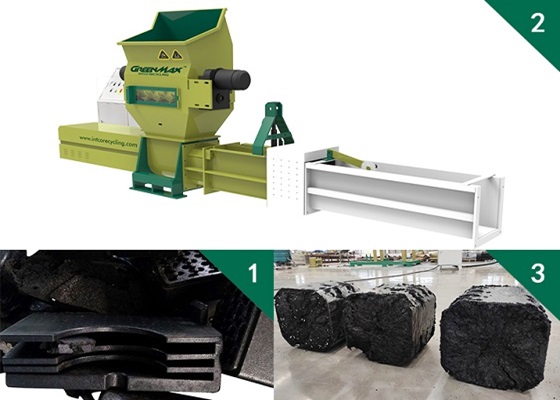What is EPP & EPP recycling Solution
Expanded Polypropylene (EPP) is expanded PP. So what is polypropylene (PP)? Polypropylene is a kind of hemicrystalline thermoplastic plastics. Most commercial polypropylene is isotactic and has an intermediate level of crystallinity between that of low-density polyethylene and high-density polyethylene. PP is normally tough and flexible. This allows polypropylene to be used as an engineering plastic, competing with materials such as ABS.
.jpg)
As an environmentally-friendly product, it can be recycled easily, and is 100% non-toxic. Expanded Polypropylene provides outstanding energy absorption characteristics, weight to strength ratio, high thermal resistance, and are resistant to water, oils and most chemicals and are available in a variety of densities. EPP has very good impact characteristics due to its low stiffness; this allows EPP to resume its shape after impacts. EPP is extensively used in model aircraft and other radio controlled vehicles by hobbyists.
EPP was first developed in the 1970's by JSP, as a result of research into new forms of polypropylene. The material's first applications were for automotive products in Japan in 1982. Demand for EPP has since increased dramatically in all regions of the world based partly on the need of auto makers to improve energy management functions whilst reducing weight and improving environmental benefits. The first automotive application for EPP was for an energy absorbing component in a bumper system. EPP is now widely utilized for numerous other automotive parts and systems, including seating and other interior components. The global expanded polypropylene foam market was valued at US$1,186.6 million in 2022 and is expected to reach US$2,581.9 million by 2032.
EPP Recycling Solution
Recycling EPP can be challenging due to its low density and resilience, but GREENMAX offers innovative technologies and equipment to facilitate the recycling process.

Their recycling solutions typically involve compacting and densifying EPP foam waste into blocks or pellets, which can then be reused in various applications or sold to manufacturers for further processing. GREENMAX offers a range of machines such as foam compactor and foam melting machine designed specifically for handling EPP foam waste efficiently and economically.
